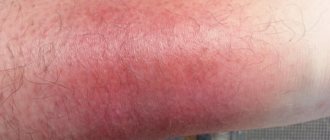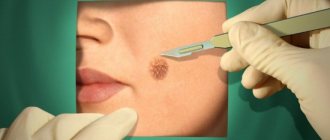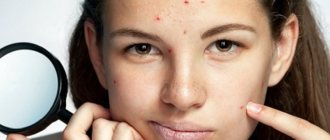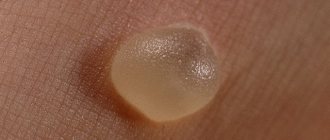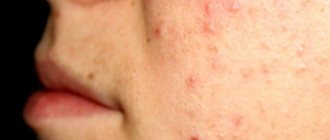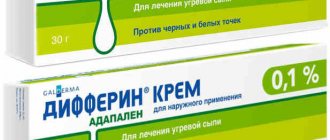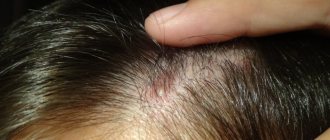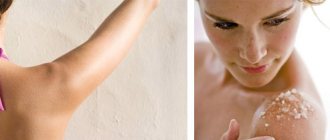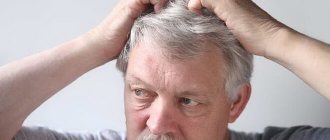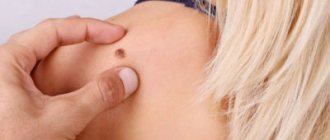Acne is an unpleasant phenomenon that everyone has encountered. Even in the absence of painful sensations, the rashes cause terrible discomfort, spoiling the appearance of the skin. After futile attempts to get rid of redness, many ask the question: when do acne go away? To answer it, you need to know the causes of rashes and eliminate them.
Do acne go away on its own? Yes, but you have the power to speed up this process.
Teenage acne: symptoms and causes
Teenage acne becomes a real problem for boys and girls. The rash begins during the transitional period of puberty, when the child experiences changes in the hormonal system. The level of androgen in the blood sharply increases, which regulates the functioning of the sebaceous glands. Causes of acne in teenagers:
- Frequent stress, depression.
- Poor nutrition. Eating a lot of fatty, salty, sweet, fried and smoked foods.
- Failure to comply with personal hygiene rules. In addition to the usual shower and washing, at this age you need to start taking care of your skin.
- Using low-quality cosmetics and choosing the wrong products.
- Deficiency of nutrients, vitamins and minerals in the body.
- Genetic predisposition.
In addition, some types of diseases can provoke the appearance of various rashes on the skin. For example, diabetes mellitus or infectious pathologies. In adolescence, acne is usually localized in areas of the body such as:
- face,
- neck,
- back,
- shoulders.
Getting rid of teenage acne on your own is very difficult. To prevent complications, you need to consult a dermatologist. The doctor will determine the cause of the rash and prescribe the optimal course of treatment.
Acne goes away after a few years as boys and girls enter adulthood. After the period of maturation of the body ends, the hormonal system normalizes, and all skin defects disappear.
Why don't they pass?
Rashes on the back often appear due to hormonal imbalances.
Acne appears on the skin of people who suffer from endocrine diseases. Rashes appear due to diseases of the pituitary gland, reproductive system or adrenal glands. A rash on the back and shoulders appears in people who take steroids on a regular basis. Androgens - hormones that stimulate acne - appear due to stress. Girls face the same problems during menstruation or pregnancy. Girls get acne if they use uncleaned makeup brushes. In addition, acne appears in women who take birth control pills. Such drugs affect hormones in the body and provoke the development of acne.
Acne in women: causes
Acne in women occurs due to many reasons. The most common include:
- frequent stress or chronic fatigue,
- disruption of the proper functioning of the hormonal system,
- disruption of the menstrual cycle,
- the beginning of menopause,
- the onset of pregnancy,
- allergic reactions,
- non-compliance with proper nutrition,
- mechanical impact,
- climate change (during travel),
- taking certain medications,
- presence of bad habits.
Acne can appear even in women who did not experience it during adolescence. Most often, rashes appear as a signal that your period will begin soon.
Pimples can also appear as a result of infection in the wound. It promotes the development of inflammatory processes.
Antibacterial agents
In order to clean not only the surface of the skin, but also the pores, you need to use masks, peelings or scrubs. It is important to choose only those products that are recommended for teenage skin. Before purchasing, be sure to read the information about what type of skin this cosmetic product is created for.
After washing and cleansing deep pores, you should use a cream with a moisturizing effect. During treatment, the boy should use only a personal towel, which is recommended not only to be washed, but also to be disinfected.
Antibiotics in the form of tablets for the treatment of acne in a 13-year-old boy are recommended to be taken only after consulting a specialist. External agents in the treatment of acne in adolescents with antibiotics are safer.
Acne in men: causes and symptoms when it appears
Men are also not protected from the appearance of skin defects. This usually occurs as a result of metabolic disorders. The causes of acne in guys at any age are:
- Violation of proper air exchange. This occurs due to the use of cosmetics that contain mineral oil and other harmful chemical elements.
- Increased sweating. This is facilitated by wearing fabrics made from non-natural materials. In addition, a man begins to sweat a lot during stress, as well as when suffering from vegetative-vascular dystonia.
- Failure to maintain proper nutrition.
- Taking medications. Medicines that then cause skin rashes include: antibiotics, immunosuppressants. anti-inflammatory drugs, hormonal medications, some types of vitamins.
- The appearance of inflammation in the body. The main symptoms of the onset of malfunctions in the functioning of internal organs are acne of any shape and type.
By the appearance of the rash, you can determine the cause that caused its appearance. For example, small red pimples concentrated in a certain area of the body indicate that an allergic reaction has occurred in the body.
If acne with a dense structure begins to appear on the body, this indicates that fatty foods predominate in the diet. Small inflamed pimples indicate a malfunction of the endocrine system.
Treatment of rashes
Daily washing is necessary to cleanse the skin of dirt and dust. To do this, it is better to use gels and foams for washing. Some products contain salicylic acid, which helps degrease and dry the skin. Supplements of aloe, calendula or chamomile heal minor cuts and restore skin. Salicylic acid and tar soap help fight acne. For greater effectiveness, it is recommended to use lotions and tonics. After this treatment, the skin rashes will end. But since people's skin varies, an individual approach is necessary. Therefore, before choosing a product, it is better to consult a cosmetologist.
READ ALSO: Age-related acne: causes, recommendations and treatment, VivaVita
- Clean&Clear;
- "Propeller";
- Clearasil.
In some cases, Skinoren will help.
In serious cases, doctors prescribe ointments. The most commonly prescribed are “Zinerit”, “Skinoren”, “Eclaran” or “Vesanoid”. Retinoids, hormonal agents and antibiotics are used in cases where previous treatments have not helped. For some girls, acne disappears after starting to take birth control. If the rash does not go away and continues even after careful care, then you should consult an endocrinologist with suspicion of thyroid disease.
Do older people get acne?
Rashes can appear not only in adolescence, but also in old age. The usual area of localization of such acne is the nose, forehead and chin. In some cases, they can spread to the neck, shoulders, décolleté, and back. When a person over the age of 50 develops skin problems, this indicates that the skin is aging and cannot cope with its functions.
In old age, people's processes that are responsible for regeneration slow down. The main causes of acne include:
- Clogged pores with sebum.
- Hormonal problems.
- Aging of internal organs and the presence of various parasites in them.
- The appearance of fungus on the skin.
When acne appears in old age, it is very important to establish its cause and make sure that serious diseases have not begun to develop in the body.
Which doctor should I go to?
Acne in a 13-year-old boy requires the same treatment as a sore throat or bronchitis. The primary treating physician for a 13-year-old teenager who has acne on the face should be a dermatologist. The specialist will examine the skin and, if necessary, advise you to consult with other doctors.
An accurate diagnosis can be made only after a complete history collection - nutrition, habits, presence of chronic diseases, heredity, as well as after tests.
There is no need to rely on self-medication. Only a specialist will help determine for what reasons acne appeared and what needs to be done to get rid of it for a 13-year-old boy.
Often, a dermatologist recommends visiting a gastroenterologist. The fact is that acne often appears when the functioning of the stomach and intestines is disrupted. And until the patient gets rid of the disease, the rash will not go away.
Some teenagers visit a cosmetologist instead of a dermatologist. This doctor will solve the problem of a couple of pimples, but only a dermatologist will help you get rid of acne.
Basic ways to fight acne
If acne begins to appear on your skin periodically, you should seek help from a dermatologist. The doctor will correctly determine the cause of their formation and select a course of treatment for each patient, taking into account the characteristics of the body. To do this, the specialist will not only conduct a very careful and attentive examination, but will also prescribe certain tests. To identify the true cause of acne, you may need to consult specialists such as:
- infectious disease specialist
- gynecologist,
- endocrinologist,
- gastroenterologist
To reduce external manifestations, the dermatologist prescribes medications to the patient that fight inflammatory processes and also reduce the active functioning of the glands. This helps reduce the production of sebum, which, combined with dead cells, clogs the pores.
To effectively combat acne, it is not enough to remove its external manifestation. A person needs to completely reconsider his lifestyle. All sweet and flour products, carbonated and alcoholic drinks, smoked meats, sausage, as well as margarine and milk should be removed from the diet.
For healthy skin, drinking green tea, mineral water, and more fresh vegetables and fruits is beneficial. In addition, you should definitely eat meat and fish that have been steamed.
If a person constantly has several pimples on his face, then he needs to consult a doctor and also undergo an examination.
Antibiotics and special cosmetic procedures may be prescribed for treatment. This complex will help reduce the secretion of sebaceous secretions, which will have a positive effect on the condition of the skin. The main thing is to strictly follow all the dermatologist’s instructions and take the medications to the end without interrupting the course.
Features of acne treatment at different ages
The choice of treatment method is also influenced by the patient's age. As a rule, acne in the postpubertal period is more difficult to treat. Response to treatment in adults can take a long time to develop. It is important that the therapy is carried out under the supervision of a dermatologist; this will help to adjust the course of treatment in time to achieve greater effectiveness.
Clindovit® is a gel based on clindamycin phosphate6. It is a topical antibiotic that exhibits antibacterial activity against propionibacteria6. The drug reduces the level of free fatty acids on the skin6.
Clindovit® gel can be used from 12 years of age6. To reduce the risk of developing antibiotic resistance, it is recommended to combine the drug with azelaic acid (for example, Azelik® gel) or benzoyl peroxide28.
*acne
Can acne go away on its own?
If acne is not the cause of diseases of the internal organs, then you can get rid of them yourself at home. To do this, first cleanse the skin, tone it and then moisturize it. Cosmetic care products are selected strictly according to age and skin type. To avoid addiction, cosmetics should be changed from time to time. In addition, you need to follow a few simple recommendations:
- Don't wash your face often. This leads to the active work of the glands that produce sebum.
- Follow the rules of proper and balanced nutrition.
- Do not touch your face with dirty hands.
- Wipe your skin with disposable wipes.
- Do not squeeze pimples with dirty hands.
If you have skin problems, it is not recommended to delay a visit to a cosmetologist or dermatologist. The doctor will quickly find the cause and solution to this problem.
Teenage acne in boys. Treatment with traditional methods
It should be borne in mind that treating teenage acne in boys is a long process. It is necessary to fully follow medical recommendations and, if you feel better, continue therapeutic procedures, otherwise acne will reappear.
The basic rule of clean and healthy skin is daily and proper personal hygiene. It is also important to monitor your diet: your daily diet must include fresh fruits and vegetables, as well as fermented milk products, boiled meat and fish. Sweet, fatty, fried and spicy foods should be avoided, as they have an aggressive effect on the endocrine system, in particular the adrenal glands and pituitary gland, which are responsible for the production of hormones.
Therapy for pathological rashes is carried out in several directions. The main goal of treatment is to:
- reduce sebum production;
- cleanse the skin of dead and keratinized layers;
- destroy the pathogen.
Table. Drug treatment for teenage acne.
| Pharmacological group and drugs | Description |
| Vitamin A - retinol (Lokacid, Airol, Isotrex, Roaccutane, Differin). | The drugs inhibit the excessive growth and development of epithelial cells lining the ducts of the glands, also reduce the production of sebum, relieve the inflammatory process, and increase immune resistance at the site of the purulent process. Thus, acne wounds heal faster, the skin in these places softens and evens out. |
| Antibacterial agents for external use (“Gyoksizon”, “Erythromycin”, “Clindovit”, “Sintomycin”, “Levomekol”, “Clidomycin”). | Medicines (externally) are prescribed for mild and moderate forms of acne (in severe cases, antibiotics are additionally prescribed orally). Treatment is long - about 2-3 months. Thanks to the bacteriostatic effect, the drugs destroy pathogenic flora that provokes the formation of papules, pustules and nodules. Thus, antibacterial ointments reduce the size of large pimples and remove inflammation around them. |
| Hormonal ointments and creams (Gyoksizon, Triderm, Akriderm, Advantan, Prednisolone). | The drugs have an anti-edematous effect and also relieve itching and redness. |
| Antiseptic and disinfectants (Ichthyol ointment, Dimexide). | Application to the skin promotes keratoplasty (exfoliation). The products have an analgesic effect, their use improves blood circulation and enhances regeneration processes (this is important for the healing of damaged skin). |
| Antiviral drugs for acne (Acyclovir, Oxolinic ointment). | Prescribed for acne caused by microorganisms of viral origin. The effectiveness of such ointments is not recognized by all dermatologists, so there is debate among doctors about the need to include this group of drugs in the treatment regimen. Viruses belong to the opportunistic flora, so they, like bacteria, can also cause intradermal inflammation. |
| Preparations to accelerate healing and resorption of scars (Dexpanthenol, Traumeel, Curiosin). | External use improves blood circulation in the epithelial layers, restores elasticity to the skin, and helps eliminate post-acne. |
Despite the high effectiveness of anti-acne medications, it is not recommended to use them on your own. The doctor, based on clinical data, will select exactly the remedy that will best and quickly cope with the cosmetic problem.
Dermatologists often recommend procedures to remove purulent and inflamed pimples (comedones). It is important to achieve complete safety and effectiveness, so the procedure must be carried out in a specialized office of a medical institution.
Hygienic skin cleansing (comedoextraction) is carried out in the following ways:
- Manual removal. After opening the skin pores, the master squeezes out the pimples with his hands. The procedure is painful and requires long-term recovery of the skin. Today this method is practically not used.
- Mechanical cleaning. Comedones are removed using special tools - a spoon, a needle, a strainer.
- Application of vacuum. Using a special apparatus, aspiration (pulling under pressure) of fat and dirt from problem pores is carried out.
- Ultrasonic cleaning. During the procedure, the doctor controls the depth of penetration of the waves, which allows for high-quality and effective removal of the pimple.
- Laser cleaning. The laser is tuned to a specific frequency, depending on the problem being solved. The likelihood of getting a burn, scar or scarring of the facial skin is eliminated, since the beam does not penetrate into the deep layers of the dermis.
To achieve a good result during the recovery period, as well as immediately after the procedure, it is recommended to carry out cleansing peels and apply soothing and drying masks.
You can clear your facial skin of acne and give it a healthy and beautiful appearance using masks, lotions and decoctions consisting of natural ingredients.
Before starting treatment procedures, you must consult your doctor! The fact is that some folk remedies can “repeat” the effect of medications and this combination will have an adverse effect on the skin.
Alternative medicine recipes to help cope with teenage acne at home:
- Tincture of calendula. The recipe is simple: pour a tablespoon of dried flowers into 0.5 liters of boiled water, let it brew for 15 minutes, then strain. Use the resulting product to wipe problem areas of the skin; you can also apply compresses or lotions. Treatment will help normalize the functioning of the sebaceous glands, and will also relieve inflammation and soreness.
- Mask made of furatsilin and medicinal herbs. Pour boiling water over half a tablespoon of chamomile and the same amount of calendula, leave for 15 minutes, strain. Crush three furatsilin tablets into powder, add a little prepared herbal decoction to them and mix until thick. Apply the resulting product directly to inflamed pimples (the mask can be done at night). In the morning, gently wipe your face with the remaining herbal solution.
- Beat the egg white until fluffy, add a tablespoon of aloe juice, and mix. Apply the mixture to the face, leave for half an hour, then rinse with warm water. Carry out the procedure twice a day for several weeks.
Acne in boys at the age of 13 appears much more often than in girls. And the main reason here is increased levels of androgens. Modern medicine can offer many methods for getting rid of acne. The intensity and duration of treatment will depend not only on the number of rashes, but also on the stage of development of the disease.
Acne often disappears on its own as the body ages. but for this you have to wait several years. but one cannot hope for such an outcome. acne has many complications, and damaged self-esteem, which is associated with appearance, may never be restored.
Therefore, you don’t have to wait for the moment when acne disappears on its own. They must be treated from the very first day of their appearance.
When treating teenage acne at the age of 13, traditional medicine recipes are also recommended. All of them will be an excellent replacement for the “chemistry” from bubbles. And with regular use, they will get rid of acne as quickly as well-known drugs from the pharmacy.
Therapy should be started as early as possible. This will prevent the disease from becoming severe. Problems can be both internal and purely cosmetic.
Diet
A teenager with problem skin should make it a rule to eat well. The rash goes away if you exclude fatty, fried and spicy foods from the diet, do not overindulge in baked goods and sweets, give up smoked and canned foods, carbonated water and fast food. Nutritionists advise limiting milk consumption.
The diet should include lean poultry and fish, fresh vegetables and fruits. Fermented milk products have a good effect on the skin. It is important to drink at least two liters of water per day. Fruit drinks and herbal teas are allowed.
Particularly useful are teas with the addition of lemon, raspberry, linden, chamomile, as well as cranberry juice.
Self-medication with cosmetic products can only worsen the situation. This is especially true for the use of antibacterial soaps and scrubs. The first dries the skin, making it vulnerable, and when using the second, it is easy to spread the infection throughout the entire skin.
Tar soap and neutral gels are used to care for problem skin. You can ask for help at a cosmetology office - a specialist can choose a cleanser individually.
Ozone therapy, a procedure in which a saline solution enriched with a mixture of ozone and oxygen is injected under the skin, is becoming increasingly popular. Mesotherapy is no less popular - injections of medicinal mixtures into areas of the greatest accumulation of acne, for example on the forehead. These two methods do a great job not only with acne, but also with the marks after it.
It is difficult to imagine complex treatment of dermatological lesions without drugs. The drug should only be selected by a doctor. All medications are available in the form of ointments or gels. To treat acne, agents of different types are used: antibacterial, anti-inflammatory and regenerating. The main ones are given in the table.
| Group of drugs | Approximate medications and supplies |
| Antibiotics | |
| Anti-inflammatory drugs with antimicrobial properties |
|
| Gels and creams with azelaic acid | |
| Hormonal ointments |
Folk remedies
Aloe is successfully used in the treatment of pimples and acne.
You can try to cure skin rashes with folk remedies. Among the main assistants, the following are most often distinguished:
- Aloe arborescens. Moisten napkins with homemade or pharmacy juice and apply to the affected areas for 30–40 minutes. This procedure is first performed daily, then every other day, then up to 2 times a week. A total of 30 procedures.
- Viburnum common. The wipes are moistened with fresh berry juice and applied to the skin 2-3 times for 15 minutes. Afterwards, a nourishing cream is applied. The procedure is performed 10 times every day, and then another 10 sessions every other day.
- Common raspberry leaves. To treat acne, it is good to make a warm infusion of the leaves. The wipes are applied to the face 3 times at intervals of 10 minutes. Course – 20–25 days.
How to get rid of traces?
To do this, you can use the following tips:
- wipe the skin daily with St. John's wort tincture;
- 2-3 times a day, lubricate problem areas with a mixture of olive oil and rosemary essential oil;
- prepare a paste of sandalwood powder by soaking it in milk overnight, apply the finished product directly to the inflamed areas, and after 15 minutes rinse with water;
- Lemon juice helps to remove traces at home;
- Pour the cooled parsley infusion into molds and put it in the freezer, wipe your face with prepared luda cubes every day for 2-4 months.
Let's go to the pharmacy
For a 13-year-old teenage boy, you can find a lot of medications for treating acne in the pharmacy. But remember that any drug should be prescribed only by a doctor.
All these drugs have an antibacterial, drying effect. Therefore, they are most often prescribed for the treatment of acne in boys.
From this list, dermatologists mainly prescribe zinerit for acne in boys. This drug contains the antibiotic erythromycin. It helps fight germs that cause inflammation, cleanses the skin and eliminates oily shine. Before application, the powder must be mixed with a special solution that comes with the bottle and applied to the face.
